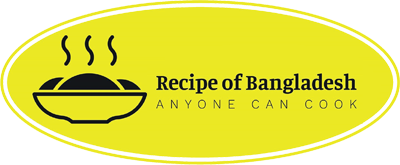Imagine preparing a delicious homemade lasagna or your favorite baked dish. You have all the ingredients ready, but there’s one question lingering in your mind: can you put glass in the oven?
This is a common dilemma many face, and the answer isn’t always straightforward. You might worry about the glass shattering or ruining your meal, but don’t fret. We’ll uncover the secrets of using glass safely in the oven. You’ll discover the types of glassware that can withstand the heat and those that can’t.
Understanding this could be the difference between a successful dinner and a kitchen disaster. So, are you ready to learn how to bake without breaking a sweat—or your glassware? Dive in to find out more and ensure your culinary creations are always a hit!
Oven-safe Glass Types
When it comes to cooking, using the right tools can make all the difference. You might wonder if glass is a safe option for baking or roasting in the oven. The answer is yes, but not all glass types are created equal. Knowing which glass is oven-safe can help prevent kitchen disasters and ensure your meals turn out perfectly. Let’s dive into two popular oven-safe glass types.
Borosilicate Glass
Borosilicate glass is a favorite among seasoned chefs and home cooks alike. You might have this type of glass in your kitchen without even knowing it. Think about those sturdy measuring cups that withstand high heat.
This glass is made to resist thermal shock, meaning it can handle sudden temperature changes. You can take it from the fridge straight to the oven without a worry. It’s used in laboratory equipment because of its durability and heat resistance.
Consider using borosilicate glass for your next baking adventure. Its strength and reliability might make you wonder why you haven’t tried it sooner. Have you ever accidentally cracked a dish because it couldn’t handle the heat? Borosilicate glass could be the solution you’ve been looking for.
Tempered Glass
Tempered glass is another great option for oven use. It’s created through a process that increases its strength compared to regular glass. You might recognize it in your kitchen as the clear, sturdy dishes you use for casseroles.
This glass is designed to break into small, less dangerous pieces if it does crack, making it safer than regular glass. Have you ever heard a dish crack as you placed it in the oven? Tempered glass minimizes that risk.
Tempered glass is perfect for everyday cooking. Its durability and safety features might make you feel more confident when handling it. Next time you’re preparing a meal, consider if tempered glass could be your go-to choice. It’s trusted in many kitchens worldwide.
So, which glass type do you think would fit best in your kitchen arsenal? Borosilicate and tempered glass offer unique benefits, catering to different needs. Understanding these options can elevate your cooking experience, making it safer and more enjoyable.
:max_bytes(150000):strip_icc()/Can-You-Put-Glass-in-Oven-4x3-55db0e6abc674eafb6be44e46bf4285e.jpg)
Credit: www.allrecipes.com
Identifying Oven-safe Glassware
Understanding which glassware is oven-safe is crucial to prevent accidents. Look for labels indicating heat resistance. Pyrex and borosilicate glass are often safe for oven use. Always check manufacturer guidelines. Avoid placing cold glass in a hot oven to prevent shattering.
Identifying oven-safe glassware is crucial for safe cooking. Not all glass is suitable for oven use. Using the wrong type can lead to breakage. This can cause safety hazards. Understanding which glassware is oven-safe helps avoid these issues. Let’s explore how to identify oven-safe glassware.
Manufacturer Labels
Manufacturer labels are key indicators. Look for labels stating “oven-safe” or “heat-resistant.” These labels provide assurance. They indicate the glass can withstand high temperatures. Always check the product’s packaging. Some labels specify temperature limits. This helps gauge suitability for different recipes.
Visual Indicators
Visual indicators are also important. Oven-safe glassware often looks thicker. This thickness provides durability. It helps withstand heat changes. The glass may have a smooth, uniform appearance. Inspect for any obvious imperfections. These can signal potential weaknesses. Glass with a slight bluish tint is often heat-resistant. This tint is a sign of reinforced material.
Risks Of Using Non-oven-safe Glass
Using non-oven-safe glass in your oven can lead to unexpected mishaps. You might think it’s just glass, but not all glass can withstand the high temperatures of an oven. The risks are real, and understanding them can save you from a disaster in the kitchen. Let’s delve into the specific dangers that come with using glass that isn’t designed for oven use.
Thermal Shock
One of the primary risks is thermal shock. Glass expands when heated and contracts when cooled. If you place cold glass into a hot oven, the rapid change in temperature can cause it to crack or break. This sudden expansion and contraction are not visible until it’s too late. Imagine putting a lasagna dish straight from the fridge into a preheated oven. The glass could shatter, ruining your meal and leaving you with a mess to clean up.
Shattering And Breakage
The danger doesn’t end with thermal shock. Non-oven-safe glass is prone to shattering and breakage at high temperatures. Have you ever heard a loud pop from your oven? That’s possibly the sound of glass breaking. Shards can scatter, posing a risk of injury and food contamination. It’s not just about the clean-up; it’s about keeping your family safe. So next time, ask yourself: is this glass meant for the oven?

Credit: www.reddit.com
Proper Usage Techniques
Using glass in the oven can be safe with proper techniques. Knowing these techniques ensures your glassware remains intact. It also ensures your food cooks evenly. This section offers essential tips for safe glass usage in ovens.
Preheating Tips
Always preheat your oven before using glassware. This helps in even heat distribution. Place glass in a preheated oven to avoid sudden temperature changes. Sudden changes might cause the glass to crack. Use oven-safe glass to prevent accidents. Check labels for oven compatibility.
Handling Hot Glassware
Exercise caution when removing hot glassware from the oven. Use oven mitts to protect your hands. Place hot glassware on a heat-resistant surface. Avoid placing it on cold or wet surfaces. Rapid temperature change can cause breakage. Let the glass cool before washing. Rushing this process may lead to cracks.
Cleaning And Maintenance
Glass cookware can be versatile in the kitchen, but cleaning and maintaining it can be tricky. Proper care ensures its longevity and functionality. Follow these tips to keep your glassware in top condition.
Avoiding Abrasive Cleaners
Gentle cleaners are best for glass cookware. Abrasive cleaners can scratch surfaces. Scratches may weaken glass and lead to breakage. Soft sponges and mild soap work well. Avoid harsh pads or powders. They can cause long-term damage.
Dishwasher Safety
Many glass dishes are dishwasher safe. Check labels for confirmation. Place glass items carefully in the dishwasher. Ensure they don’t touch each other. This prevents chips and cracks. Use gentle cycles for best results. Avoid high heat settings. They might stress the glass.
Common Myths And Misconceptions
Many people wonder if glass can safely go in the oven. Several myths and misconceptions surround this topic. Understanding these can prevent kitchen mishaps. Let’s explore the truths behind common myths.
Microwave Vs. Oven Use
Microwave ovens and conventional ovens have different heating methods. Microwaves heat food quickly, using electromagnetic waves. Glass dishes in microwaves rarely face stress. In contrast, conventional ovens apply direct heat. This can stress glass, especially if not oven-safe. Always check if your glassware is labeled oven-safe.
Cold To Hot Transitions
Another misconception involves sudden temperature changes. Moving glass from a cold environment to a hot oven can cause breakage. This rapid transition stresses the glass. Avoid putting cold glass directly into a hot oven. Allow it to adjust to room temperature first. This simple step can prevent accidents.
Alternative Materials For Oven Use
When using the oven, glass is not always suitable for every dish. Some glass types can shatter under high heat. Luckily, other materials can serve well in the oven. These alternatives offer durability and safety for cooking.
Ceramic Options
Ceramic bakeware is a great choice for oven use. It is known for even heat distribution. This helps achieve perfectly cooked meals. Ceramic is also non-reactive. It does not affect food flavor or color. Many dishes come in stylish designs. They add charm to your kitchen. Ceramic can withstand high temperatures. It is excellent for baking casseroles and pies. Ensure the ceramic is oven-safe before use.
Metal Bakeware
Metal bakeware is ideal for baking. It is durable and long-lasting. Metal heats up quickly and evenly. It gives baked goods a nice crust. Different metals are available, like aluminum and stainless steel. Aluminum is lightweight and affordable. Stainless steel is sturdy and often non-stick. Metal bakeware is great for cakes, cookies, and bread. It is easy to clean and maintain. Always check the maximum temperature limit before using metal in the oven.

Credit: www.reddit.com
Frequently Asked Questions
How Do I Know If A Glass Is Oven Safe?
Check for “oven-safe” labeling or symbols on the glass. Verify with the manufacturer for heat resistance specifications. Avoid sudden temperature changes, which can cause glass to break. Use tempered glass, as it’s designed to withstand oven temperatures. Always follow usage guidelines to ensure safety.
Can Glass Go In The Oven At 350?
Yes, oven-safe glass can be used at 350°F. Check for markings indicating it’s oven-safe. Avoid sudden temperature changes to prevent cracking. Always follow manufacturer guidelines for best results. Ensure the glassware is suitable for baking or cooking at that temperature.
How Do I Know If My Glass Lid Is Oven Safe?
Check for an oven-safe symbol on the lid. Confirm with the manufacturer’s instructions or website. Ensure the glass is tempered to withstand high temperatures. Avoid direct contact with heating elements. Use caution and test at lower temperatures first.
Can You Put Glass In Your Oven?
Yes, you can put oven-safe glass in your oven. Check the manufacturer’s guidelines for temperature limits. Avoid sudden temperature changes to prevent breakage. Always ensure the glass dish is specifically labeled as oven-safe.
Final Words
Understanding glass in ovens is crucial for safety. Always check the glass type. Use oven-safe glass for baking or cooking. Tempered glass withstands heat well. Regular glass can shatter easily. Look for labels indicating oven safety. Avoid sudden temperature changes to prevent cracking.
Preheat the oven before using glassware. Use mitts to handle hot dishes safely. Knowing these tips helps avoid accidents. Glass can be a great choice for baking. Just ensure it’s the right kind. Enjoy your cooking adventures with confidence. Stay safe and informed in your kitchen.

Leave a Reply